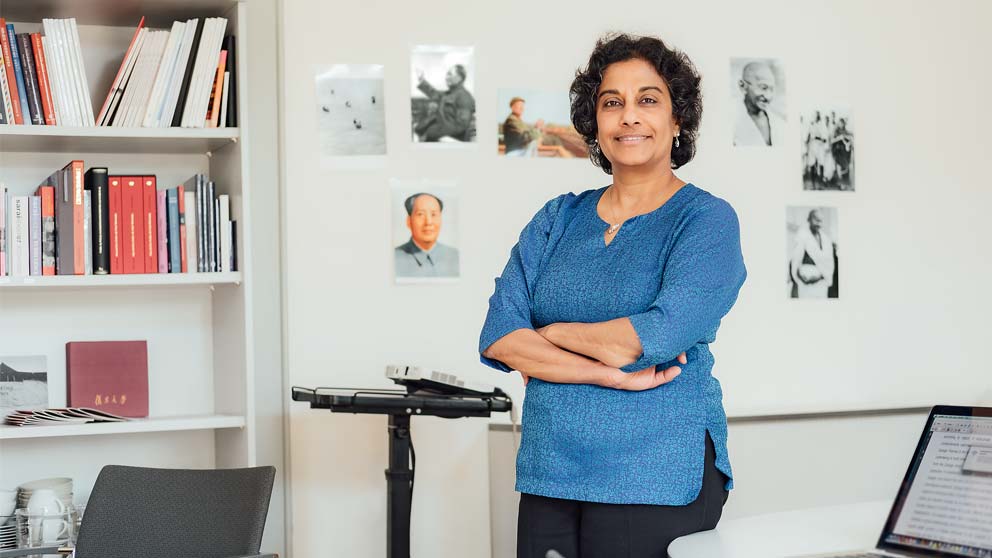Jump to the content
- {{#headlines}}
- {{title}} {{/headlines}}

Professor Dr Sumathi Ramaswamy is an Anneliese Maier Research Award Winner, cooperating with Heidelberg Universityg.

Ramaswamy wants to discover how the two of them managed to create images that mobilised millions of people for their respective movements and turned them into heroes. “Even decades after his death, Gandhi is still the most frequently pictured Indian of his time.” In collaboration with her Heidelberg colleague Barbara Mittler, she examines historical images of the two men and compares an aspect that has been neglected so far: the aesthetic/artistic appearance of their bodies with a focus on stature and clothing. “I’m also interested in how their masculinity is portrayed,” says Ramaswamy. Taking examples such as Gandhi’s salt march and Mao’s Yangtze River swim, she investigates how the two figures presented themselves in public. She suspects that “they used these practices to strengthen their leadership position and unite a national community behind them.”
The nature of heroism has changed over time, according to Ramaswamy. With social mass media, heroes emerge over night, but are very short-lived. “In Gandhi’s and Mao’s days, heroism thrived much better. Both of them managed to use the power of images to anchor themselves in their supporters’ minds.”
